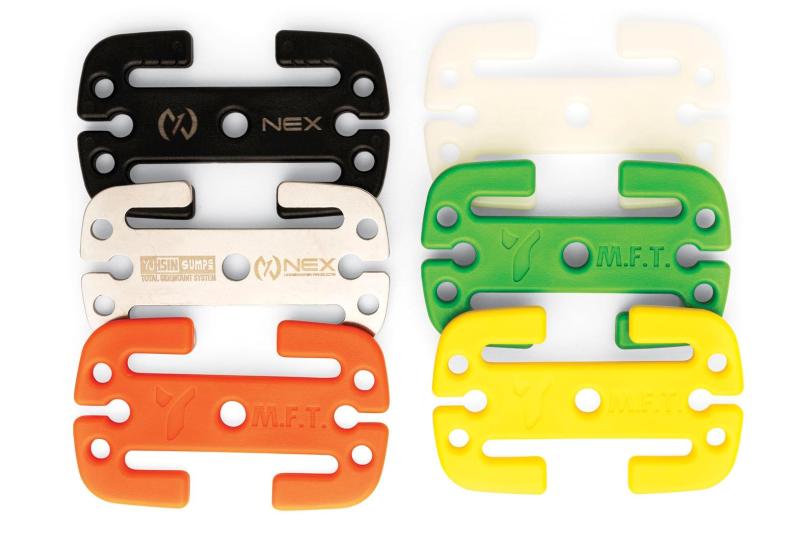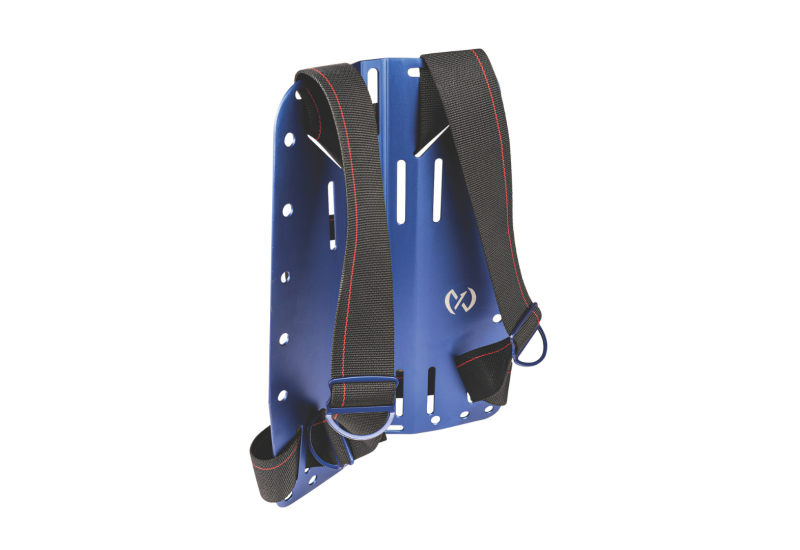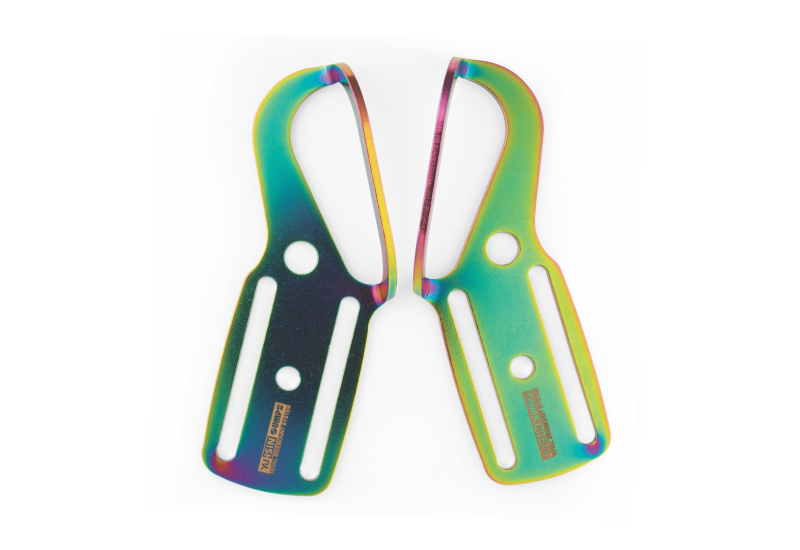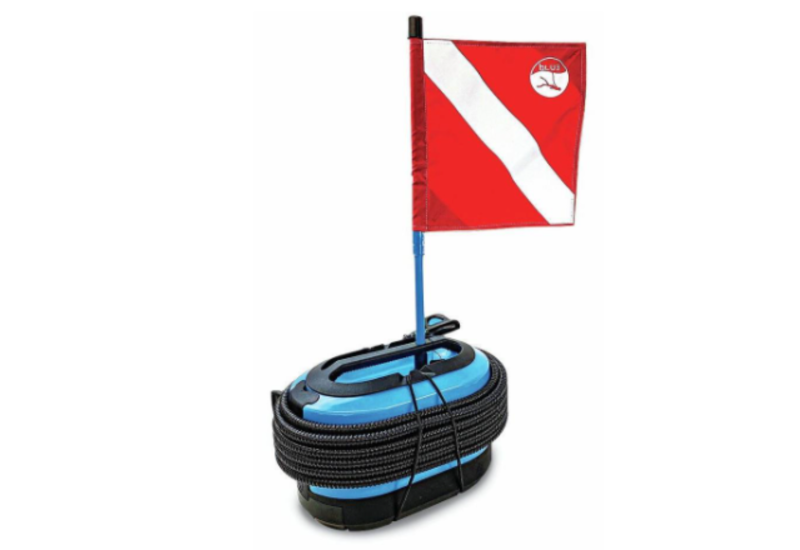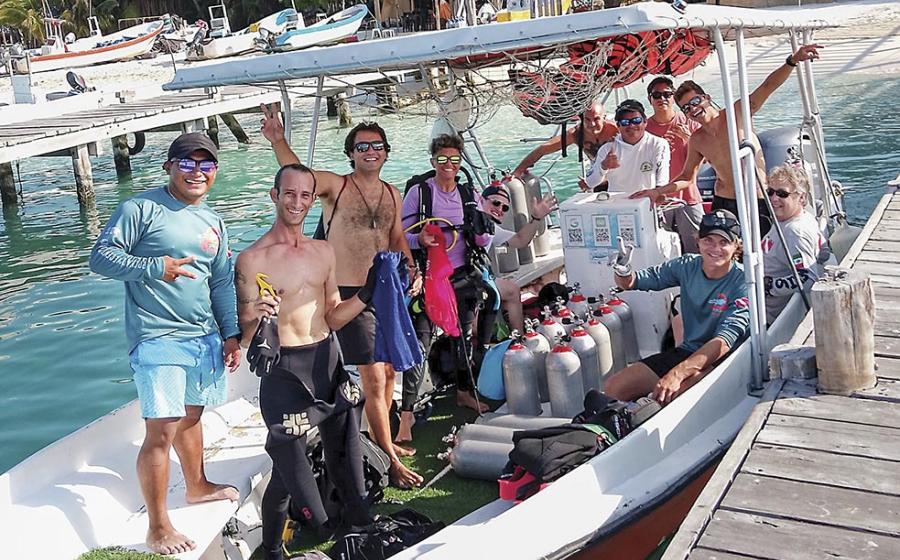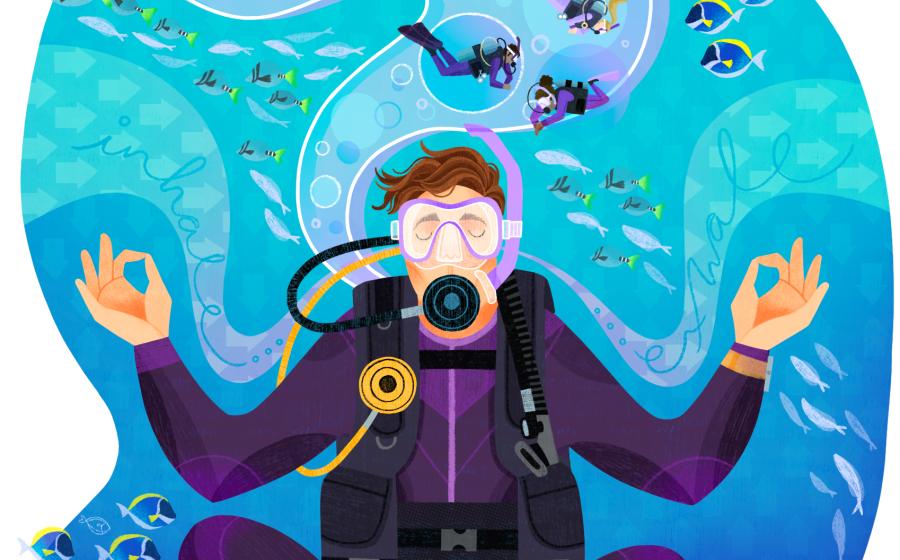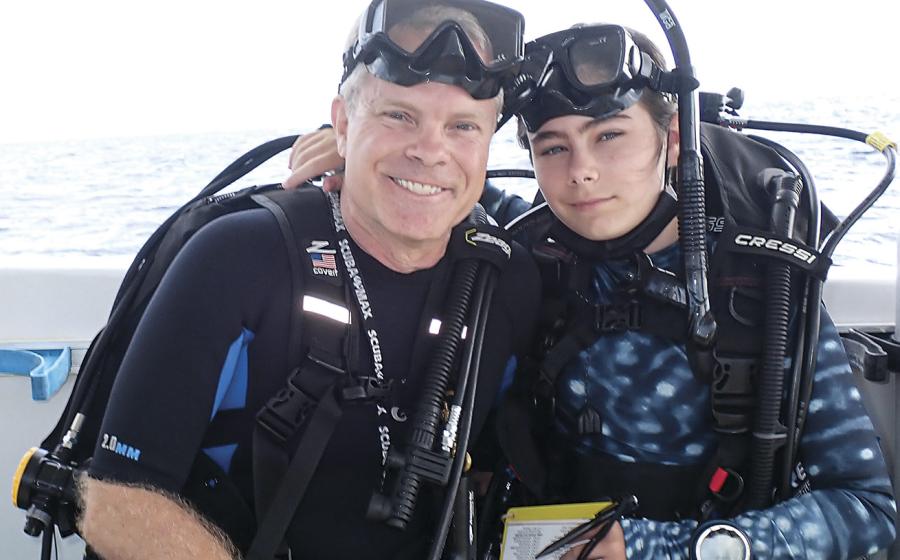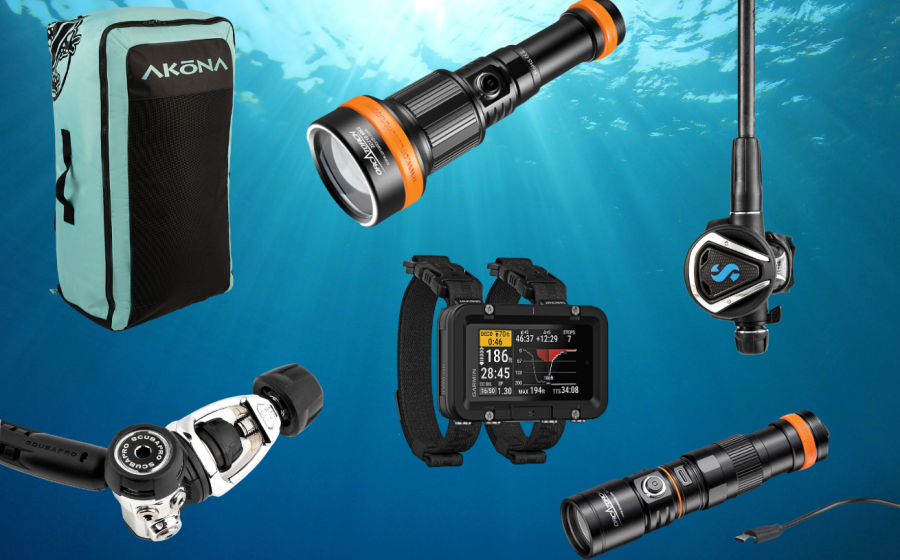Best New Gas-Integrated Computers
November 2001
By Jon Hardy
Dive Computers Reviewed in This Article
| Aeris 500AI Aeris 750GT Oceanic DataMax Pro Oceanic DataMax Pro Plus | Oceanic DataTrans Plus SCUBAPRO Aladin Air Z Nitrox Suunto Cobra |
As with most things in the modern world, maximizing both the enjoyment and the safety of scuba diving boils down to one thing: information. No-decompression limits, bottom time, ascent rates and nitrogen loading are all critical to a safe and happy underwater experience. The more you know, the safer you go.
Gas-integrated computers enhance this data bounty by including tank pressure and corresponding time-to-dive info. With a gas-integrated computer, you can compare your no-decompression limits to your gas time, either avoid decompression or intentionally go into decompression, all while knowing that you're going to have enough air to be safe.
There are two types of gas-integrated computers on the market today: console computers and hoseless computers that transmit tank pressure info via radio waves. This month we look at seven models from four different manufacturers. All use the same algorithms as their respective nonintegrated computer cousins.
Time to Test
Computers were evaluated in chamber tests incorporating a series of 13 simulated dives, as follows.
-
Dive 1: A single dive of 40 feet to the maximum of the computer's no-decompression limits (NDLs).
-
Dive 2: A single dive of 60 feet to the max of its NDLs.
-
Dive 3: A single dive of 130 feet to the max of its NDLs.
-
Dive 4: A single dive of 160 feet to the max of its NDLs (for extended-range diving).
-
Dive 5: A sawtooth dive of three-minute repeats, alternating from 100 to 60 feet to the max of the NDLs.
-
Dive 6, 7 & 8: Three bounce dives to 130 feet for 10 minutes with one-hour surface intervals between each dive, putting all the computers into required decompression status.
-
Dive 9: An intentional violation of each computer's decompression requirements by not performing required decompression stops, then diving the computer again to check its function.
-
Dive 10 & 11: Reverse-profile dives--the first dive to 60 feet for 45 minutes, followed one hour later by a dive to 130 feet to the max of the NDLs.
-
Dive 12: A multilevel dive from 130 to 100 to 60 to 30 to 15 feet, for a total time of 45 minutes.
-
Dive 13: A repetitive multilevel dive, one hour after dive 12, from 100 to 60 to 30 to 15 feet, for a total dive time of 45 minutes.
Ocean tests focused on a diver's ability to see, read and understand the displayed data as well as to access alternate screen data, both under water and on the surface. The goal was to determine the user-friendliness of each computer.
Aeris 500AI & 750GT
||
|---|
|

|
| Aeris 750GT|
Aeris 500AIPrice: $839.95.Mounting: Console.User control: Two push buttons.
Aeris 750GT
Price: $1,099.95.
Mounting Options: Wrist.
User control: Two push buttons.
Thumbs Up: Large numbers; Easy-to-understand oxygen/nitrogen bar graphs; Green/yellow/red highlighting; Dual-button controls; Well-designed owner's manual and waterproof on-site prompt card; User-replaceable batteries; Backlighting works both on surface and under water; Easy adjusting of NDLs at any time using the bar graph; Alternate screens; Handles multilevel and repetitive diving well; Excellent PC interface program.
Thumbs Down: Time to fly is an arbitrary countdown; Some symbols and smaller numbers are difficult to read at depth (500AI); Defaults to 50 percent oxygen when in nitrox mode (750GT).
Aeris computers' reputation for user-friendliness is due in large part to its dual control buttons which let you slip easily in and out of various planning and dive modes. Multicolored graphs track nitrogen and oxygen loading and ascent rate. Monitoring the accumulation of pixels in each color-coded area of the screen allows you to build your own level of conservatism into your dives.
Both of these computers are nitrox-compatible, offer alternate screens and audible alarms. You can get from 300 to 600 dive hours on the 500AI, depending upon how many dives you make each day. The 750GT will deliver about 100 dive hours. Batteries are user-replaceable.
Unique among hose-mount gas-integrated dive computers, the 500AI is designed horizontally; data blocks are displayed side-by-side rather than stacked on top of one another. Able to show both gas time and NDLs simultaneously, the computer allows you to turn off the oxygen default in nitrox mode. An additional alarm allows you to plan your turnaround point based on tank pressure. All audible alarms can be turned off if desired. The computer is PC-downloadable up to 250 dives. An optional high-pressure disconnect enables you to separate the computer console from its hose for security or storage.
Although critical data is represented by big bold numbers and bar graphs, some smaller numbers and icons are difficult to see at depth. For example, on the main screen, tank pressure is represented by large numbers and by a small pressure bar, both of which are displayed while on the surface. But once you start your dive, the pressure displayed in numbers is replaced by Breathing Gas Time Remaining. You can still check tank pressure via the pressure bar, but it can be difficult to see. To get the numeric display at depth you must switch to the alternate screen.
The 750GT is a hoseless dive computer. By using a sensor that's screwed into a first stage pressure port, you get the benefit of tank pressure data without a potentially cumbersome console dangling at your side. Of course there's always the chance that the computer will sever its link with the sensor and lose its readings, but ocean tests show that if it happens at all, it's only a momentary condition.
The 750GT is slightly more conservative than other Aeris computers, but not enough to change its overall rating. However, the default to 50 percent oxygen, if you forget to reset the nitrox, can be inconvenient. Features include an extended dive algorithm and a gas consumption rate monitor. The computer is PC-downloadable up to 25 dives.
Oceanic DataMax Pro, DataMax Pro Plus & DataTrans Plus
||
|---|
|

|
| Oceanic DataTrans Plus|
Oceanic DataMax ProPrice: $599.95.Mounting Options: Console.User control: One push button.
Oceanic DataMax Pro Plus
Price: $899.95 (deluxe version with compass and quick disconnect), $799.95 for computer.
Mounting Options: Console, hose, wrist, BC.
User control: Two push buttons.
Oceanic DataTrans Plus
Price: $1,154.95.
Mounting Options: Wrist, BC.
User control: Two push buttons.
Thumbs Up: Clear graphs with three-color highlighting; Large numbers; User-friendly; Easy adjusting of no-deco limits with nitrogen graph; Reasonably handles multilevel and repetitive diving; Multiple user settings; Exceptional owner's manual and waterproof prompt card; User-replaceable batteries; Excellent PC interface program (DataMax Pro Plus and DataTrans Plus); Oxygen defaults in nitrox mode can be turned off (DataMax Pro Plus).
Thumbs Down: Time to fly is an arbitrary countdown; Conservative on repeated deep dives; No backlighting (DataMax Pro).
Oceanic dive computers are known for their big bold numbers, intuitive multicolored graphs and push-button operation, all of which combine to provide extremely user-friendly computers. These three gas-integrated systems offer both visible and audible alarms, gas time remaining and bar graphs highlighted in green, yellow and red that track nitrogen loading, available air and ascent rate. Stay out of the red, ease off when in the yellow, all is clear in the green--it's that simple. Batteries are user-replaceable. And, of course, Oceanic's owner's manuals and prompt cards remain among the best in the business.
The DataMax Pro, with its single-button control, is the least expensive gas-integrated dive computer in our test group. It has been around for a while, and boasts a long, dependable track record. However, it does lack many modern dive computer functions and features. The computer offers no backlighting, is not nitrox-compatible, nor does it have a PC-downloadable memory. It does offer a big bold display that includes a tank pressure bar graph. Batteries last 100 hours, the logbook holds nine dives and it will read depths to 249 feet.
An updated version of the DataMax Pro, the DataMax Pro Plus overcomes most of the limitations of the DataMax Pro. Nitrox-capable, the DataMax Pro Plus has a 12-dive logbook, is PC-downloadable with a memory capacity of 100-plus dives and will operate to a maximum depth of 300 feet. An extremely easy-reading computer, it also makes full use of multicolored graphs. The screen uses big numbers and has a separate box to display gas pressure. Dual-button controls provide easy, on-demand access to the alternate screen and various operational modes.
The DataMax Pro Plus offers not only Oceanic's "Oceanglo" backlighting for underwater use, but also "Smartglo" backlighting for surface work. The gas time remaining graph allows for ascent time, any decompression stops and a pre-set reserve. Its 300-hour battery life is convenient, as is its optional quick-disconnect console. You don't need a wrench, just a simple turn and the console pops off, protecting your investment.
Also nitrox-capable, the DataTrans Plus is Oceanic's hoseless gas-integrated computer. Tank pressure, gas time remaining and gas consumption rates are all continuously transmitted to the receiver on your wrist for enhanced computer diving freedom.
While it shares Oceanic's multicolor bar graph design for nitrogen and oxygen loading with its console cousins, the numbers on the DataTrans Plus are not quite as big or bold, and the screen is not quite as intuitive. At depth, it's not always easy to discern what all the smaller numbers and symbols mean.
The DataTrans Plus operates to 300 feet. It features Oceanglo backlighting for underwater illumination, a 100-hour battery life and a real time clock. Its logbook holds 12 dives, and it has a PC-downloadable memory capacity for more than 25 dives. Can be set in five languages.
SCUBAPRO Aladin Air Z Nitrox
||
|---|
|

|
| SCUBAPRO Aladin Air Z Nitrox|
Price: $1,260.Mounting Options: Wrist, BC.User control: Electrical contacts.
Thumbs Up: Concise, easily understandable displays; Easy to read under water; Gas time remaining and NDLs both displayed at the same time; Time to fly is an actual calculation; Variable ascent rate indicators provided; More realistic approach to decompression; Long-life batteries; Excellent dive profiler with PC interface.
Thumbs Down: Complete lockout in violation mode; Some settings and data are accessible only with a PC; Electrical contacts are not labeled; Batteries must be replaced at the factory.
Unique among the gas-integrated models tested, Scubapro's Uwatec computers exclusively use water-activated electrical contacts instead of push-button controls. Keeping it simple, all diving data is presented on one easy-to-read screen--there are no alternate screens while in the dive mode.
Uwatec's variable ascent rate indicator (faster when deeper, slower when shallower) improves diving efficiency as long as you keep in mind that a rapid ascent can cause a decompression stop, and if not heeded will then cause a violation and a lockout. And with Uwatec computers, lockouts are total--no default to gauge mode, nothing at all for 24 hours.
Since the electrical contacts are not labeled, on the surface Uwatec computers require some practice to operate. It's sometimes a challenge to figure out or remember which two contacts put you into which mode. For example, log book and dive planning functions are easy to use--once you determine which contact combinations will get you to the screens you want.
Although there are no user adjustments, Uwatec computers are programmed with a self-adjustment function that increases the conservatism based on temperature, work load, ascent rates and dive profiles. The PC interface provides for 37 logged dives and 175 to 200 minutes of dive profiles, but this can be increased with the use of the optional Memo Mouse to nearly 60 hours of profiles.
Owner's manuals for this computer is an improvement over Uwatec's non-gas-integrated computers, but it can still be frustrating to pull information off the pages. Batteries must be replaced at the factory, but you can easily go more than five years between replacements, depending on how many dives are made each year.
The hoseless Aladin Air Z Nitrox comes standard with illumination and offers an optional screen guard to extend the life of the computer. However, at depth the guard can act as a trap for sand and seaweed, and on the surface, sun reflects off, and water tends to bead on, the plastic, making the computer screen underneath sometimes difficult to see. But if problems persist with the screen guard, you don't have to use it.
The Aladin Air Z Nitrox will work without the first stage transmitter, but of course will not display the gas function. It tested slightly more conservative than the other hoseless computers in this go-round.
The oxygen function of the Aladin Air Z Nitrox does not default. It can be programmed for oxygen from 21 to 99 percent in one percent increments. The computer features excellent oxygen warnings.
Suunto Cobra
||
|---|
|

|
| Suunto Cobra|
Price: $750.Mounting Options: Cobra.User control: Three push buttons and electrical contacts (automatic activation).
Thumbs Up: Compact, ergonomic package; Bar graphs with three-color highlighting; Built-in dive simulator to plan future dives; Extended decompression range; Provides for both mandatory and optional safety stops; Maximum depth alarm; Huge dive profile/logbook memory; PC-downloadable; Bookmark feature to mark events during the dive; Backlight for both surface and under water; Optional quick-release connection; Above-average owner's manual and large waterproof prompt card; Nitrox-capable; User-replaceable battery.
Thumbs Down: Multicolored bar graphs difficult to see on the surface and at depth; Push-button controls not labeled; Difficult to push buttons due to console-molded button covers, especially at depth with gloves on; Sometimes difficult to read screen on the surface with shield attached; If violated, goes into gauge-only mode for 48 hours; Nitrogen and oxygen share the same bar graph.
Of all the gas-integrated dive computers tested, the Cobra packs its features and functions into the smallest package. It offers three operating modes: compressed air, nitrox or free diving. The red/yellow/green highlighting is intuitive, but the color bars are a bit thin--difficult to see at depth. The electroluminescent illumination certainly helps.
The nitrogen-loading bar graph indicates the time available at depth, not the total impact of the nitrogen loading like on other dive computers. The decompression mode is continuous, so as you ascend the ceiling moves progressively upward, giving you credit for outgassing and providing an hourglass symbol for the optimum decompression zone. During decompression, the total ascent time is also displayed. The Cobra has an automatic safety stop countdown.
Along with delivering tank pressure and estimated gas time remaining, you have the option to set dive time and depth alarms to help facilitate your dive. And while at depth, you can enter bookmarks into the computer's logbook for future reference. The Cobra offers more logbook memory than any other computer--a full 36 hours. This data can be read directly from the display or via a download to your PC. A handy feature is the built-in dive simulator, which allows you to profile projected dives to make sure they can be accomplished within safety limits. The battery powers the computer for one to two years, depending on the number of dives made.
November 2001
By Jon Hardy
Dive Computers Reviewed in This Article
||| |---|---|
| Aeris 500AI Aeris 750GT Oceanic DataMax Pro Oceanic DataMax Pro Plus | Oceanic DataTrans Plus SCUBAPRO Aladin Air Z Nitrox Suunto Cobra |As with most things in the modern world, maximizing both the enjoyment and the safety of scuba diving boils down to one thing: information. No-decompression limits, bottom time, ascent rates and nitrogen loading are all critical to a safe and happy underwater experience. The more you know, the safer you go.
Gas-integrated computers enhance this data bounty by including tank pressure and corresponding time-to-dive info. With a gas-integrated computer, you can compare your no-decompression limits to your gas time, either avoid decompression or intentionally go into decompression, all while knowing that you're going to have enough air to be safe.
There are two types of gas-integrated computers on the market today: console computers and hoseless computers that transmit tank pressure info via radio waves. This month we look at seven models from four different manufacturers. All use the same algorithms as their respective nonintegrated computer cousins.
Time to Test
Computers were evaluated in chamber tests incorporating a series of 13 simulated dives, as follows.
Dive 1: A single dive of 40 feet to the maximum of the computer's no-decompression limits (NDLs).
Dive 2: A single dive of 60 feet to the max of its NDLs.
Dive 3: A single dive of 130 feet to the max of its NDLs.
Dive 4: A single dive of 160 feet to the max of its NDLs (for extended-range diving).
Dive 5: A sawtooth dive of three-minute repeats, alternating from 100 to 60 feet to the max of the NDLs.
Dive 6, 7 & 8: Three bounce dives to 130 feet for 10 minutes with one-hour surface intervals between each dive, putting all the computers into required decompression status.
Dive 9: An intentional violation of each computer's decompression requirements by not performing required decompression stops, then diving the computer again to check its function.
Dive 10 & 11: Reverse-profile dives--the first dive to 60 feet for 45 minutes, followed one hour later by a dive to 130 feet to the max of the NDLs.
Dive 12: A multilevel dive from 130 to 100 to 60 to 30 to 15 feet, for a total time of 45 minutes.
Dive 13: A repetitive multilevel dive, one hour after dive 12, from 100 to 60 to 30 to 15 feet, for a total dive time of 45 minutes. Ocean tests focused on a diver's ability to see, read and understand the displayed data as well as to access alternate screen data, both under water and on the surface. The goal was to determine the user-friendliness of each computer.
Aeris 500AI & 750GT
|| |---|
|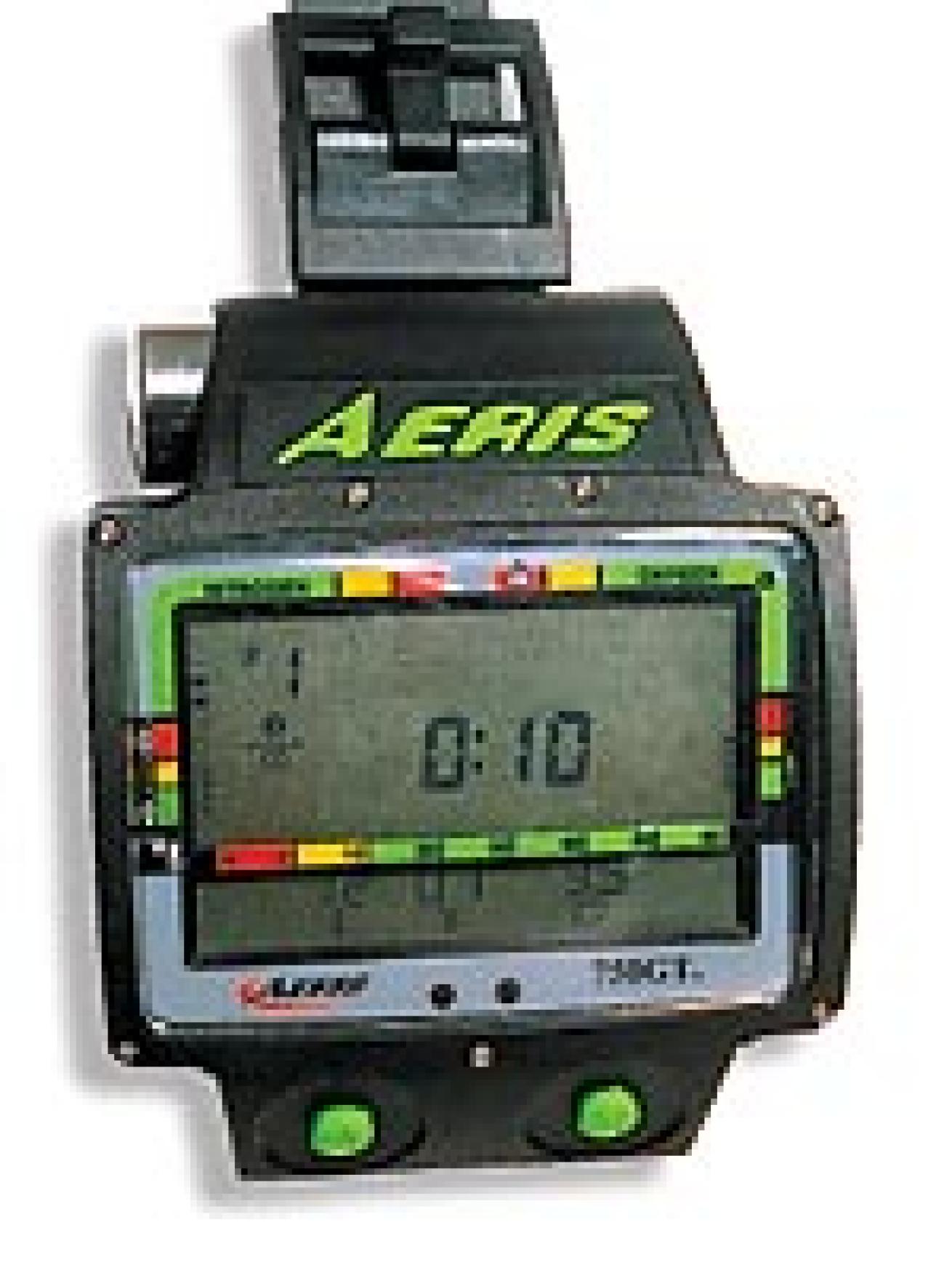
| | Aeris 750GT|
Price: $839.95.
Mounting: Console.
User control: Two push buttons.
Aeris 750GT
Price: $1,099.95.
Mounting Options: Wrist.
User control: Two push buttons.
Thumbs Up: Large numbers; Easy-to-understand oxygen/nitrogen bar graphs; Green/yellow/red highlighting; Dual-button controls; Well-designed owner's manual and waterproof on-site prompt card; User-replaceable batteries; Backlighting works both on surface and under water; Easy adjusting of NDLs at any time using the bar graph; Alternate screens; Handles multilevel and repetitive diving well; Excellent PC interface program.
Thumbs Down: Time to fly is an arbitrary countdown; Some symbols and smaller numbers are difficult to read at depth (500AI); Defaults to 50 percent oxygen when in nitrox mode (750GT).
Aeris computers' reputation for user-friendliness is due in large part to its dual control buttons which let you slip easily in and out of various planning and dive modes. Multicolored graphs track nitrogen and oxygen loading and ascent rate. Monitoring the accumulation of pixels in each color-coded area of the screen allows you to build your own level of conservatism into your dives.
Both of these computers are nitrox-compatible, offer alternate screens and audible alarms. You can get from 300 to 600 dive hours on the 500AI, depending upon how many dives you make each day. The 750GT will deliver about 100 dive hours. Batteries are user-replaceable.
Unique among hose-mount gas-integrated dive computers, the 500AI is designed horizontally; data blocks are displayed side-by-side rather than stacked on top of one another. Able to show both gas time and NDLs simultaneously, the computer allows you to turn off the oxygen default in nitrox mode. An additional alarm allows you to plan your turnaround point based on tank pressure. All audible alarms can be turned off if desired. The computer is PC-downloadable up to 250 dives. An optional high-pressure disconnect enables you to separate the computer console from its hose for security or storage.
Although critical data is represented by big bold numbers and bar graphs, some smaller numbers and icons are difficult to see at depth. For example, on the main screen, tank pressure is represented by large numbers and by a small pressure bar, both of which are displayed while on the surface. But once you start your dive, the pressure displayed in numbers is replaced by Breathing Gas Time Remaining. You can still check tank pressure via the pressure bar, but it can be difficult to see. To get the numeric display at depth you must switch to the alternate screen.
The 750GT is a hoseless dive computer. By using a sensor that's screwed into a first stage pressure port, you get the benefit of tank pressure data without a potentially cumbersome console dangling at your side. Of course there's always the chance that the computer will sever its link with the sensor and lose its readings, but ocean tests show that if it happens at all, it's only a momentary condition.
The 750GT is slightly more conservative than other Aeris computers, but not enough to change its overall rating. However, the default to 50 percent oxygen, if you forget to reset the nitrox, can be inconvenient. Features include an extended dive algorithm and a gas consumption rate monitor. The computer is PC-downloadable up to 25 dives.
Oceanic DataMax Pro, DataMax Pro Plus & DataTrans Plus
|| |---|
|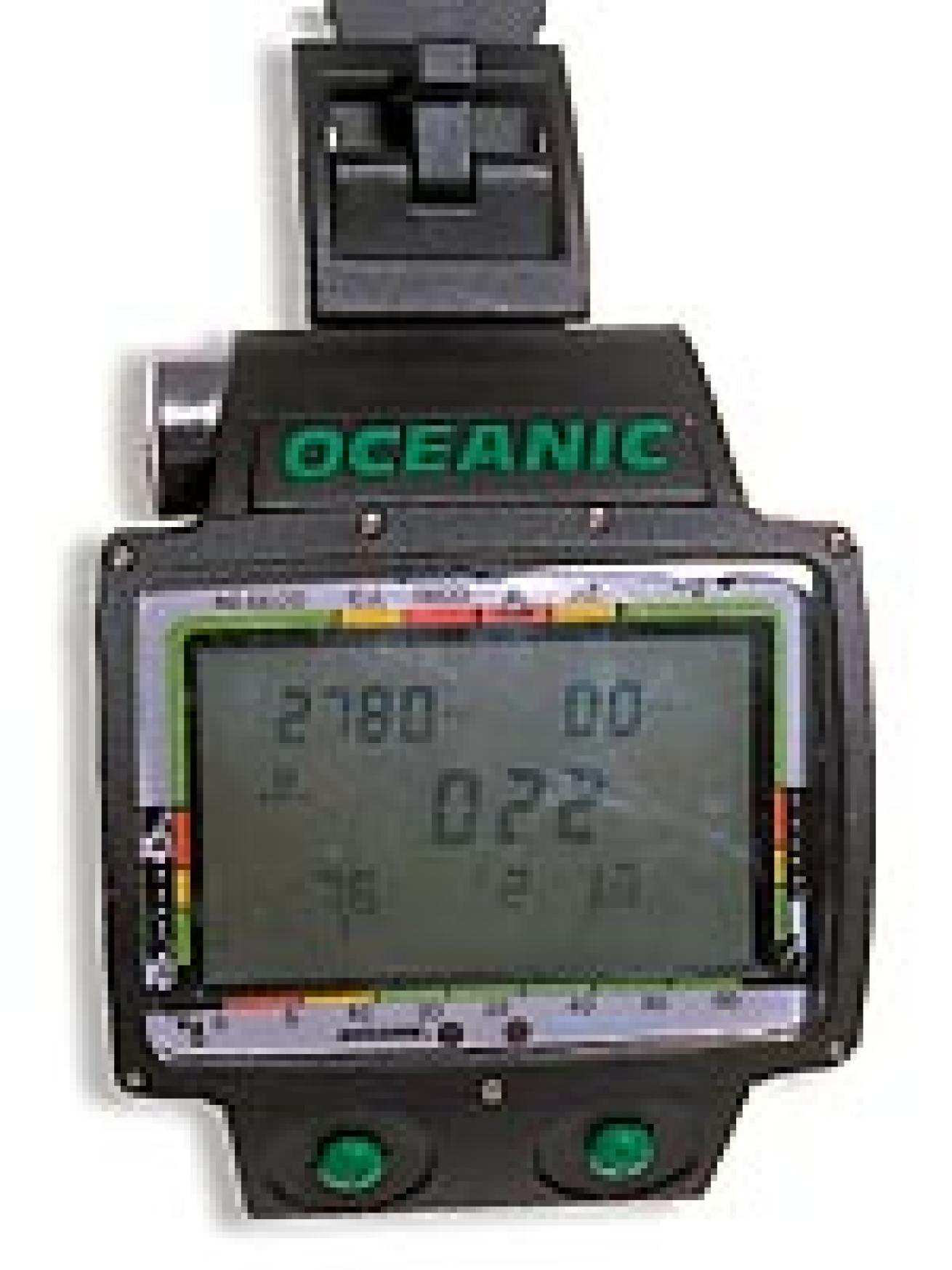
| | Oceanic DataTrans Plus|
Price: $599.95.
Mounting Options: Console.
User control: One push button.
Oceanic DataMax Pro Plus
Price: $899.95 (deluxe version with compass and quick disconnect), $799.95 for computer.
Mounting Options: Console, hose, wrist, BC.
User control: Two push buttons.
Oceanic DataTrans Plus
Price: $1,154.95.
Mounting Options: Wrist, BC.
User control: Two push buttons.
Thumbs Up: Clear graphs with three-color highlighting; Large numbers; User-friendly; Easy adjusting of no-deco limits with nitrogen graph; Reasonably handles multilevel and repetitive diving; Multiple user settings; Exceptional owner's manual and waterproof prompt card; User-replaceable batteries; Excellent PC interface program (DataMax Pro Plus and DataTrans Plus); Oxygen defaults in nitrox mode can be turned off (DataMax Pro Plus).
Thumbs Down: Time to fly is an arbitrary countdown; Conservative on repeated deep dives; No backlighting (DataMax Pro).
Oceanic dive computers are known for their big bold numbers, intuitive multicolored graphs and push-button operation, all of which combine to provide extremely user-friendly computers. These three gas-integrated systems offer both visible and audible alarms, gas time remaining and bar graphs highlighted in green, yellow and red that track nitrogen loading, available air and ascent rate. Stay out of the red, ease off when in the yellow, all is clear in the green--it's that simple. Batteries are user-replaceable. And, of course, Oceanic's owner's manuals and prompt cards remain among the best in the business.
The DataMax Pro, with its single-button control, is the least expensive gas-integrated dive computer in our test group. It has been around for a while, and boasts a long, dependable track record. However, it does lack many modern dive computer functions and features. The computer offers no backlighting, is not nitrox-compatible, nor does it have a PC-downloadable memory. It does offer a big bold display that includes a tank pressure bar graph. Batteries last 100 hours, the logbook holds nine dives and it will read depths to 249 feet.
An updated version of the DataMax Pro, the DataMax Pro Plus overcomes most of the limitations of the DataMax Pro. Nitrox-capable, the DataMax Pro Plus has a 12-dive logbook, is PC-downloadable with a memory capacity of 100-plus dives and will operate to a maximum depth of 300 feet. An extremely easy-reading computer, it also makes full use of multicolored graphs. The screen uses big numbers and has a separate box to display gas pressure. Dual-button controls provide easy, on-demand access to the alternate screen and various operational modes.
The DataMax Pro Plus offers not only Oceanic's "Oceanglo" backlighting for underwater use, but also "Smartglo" backlighting for surface work. The gas time remaining graph allows for ascent time, any decompression stops and a pre-set reserve. Its 300-hour battery life is convenient, as is its optional quick-disconnect console. You don't need a wrench, just a simple turn and the console pops off, protecting your investment.
Also nitrox-capable, the DataTrans Plus is Oceanic's hoseless gas-integrated computer. Tank pressure, gas time remaining and gas consumption rates are all continuously transmitted to the receiver on your wrist for enhanced computer diving freedom.
While it shares Oceanic's multicolor bar graph design for nitrogen and oxygen loading with its console cousins, the numbers on the DataTrans Plus are not quite as big or bold, and the screen is not quite as intuitive. At depth, it's not always easy to discern what all the smaller numbers and symbols mean.
The DataTrans Plus operates to 300 feet. It features Oceanglo backlighting for underwater illumination, a 100-hour battery life and a real time clock. Its logbook holds 12 dives, and it has a PC-downloadable memory capacity for more than 25 dives. Can be set in five languages.
SCUBAPRO Aladin Air Z Nitrox
|| |---|
|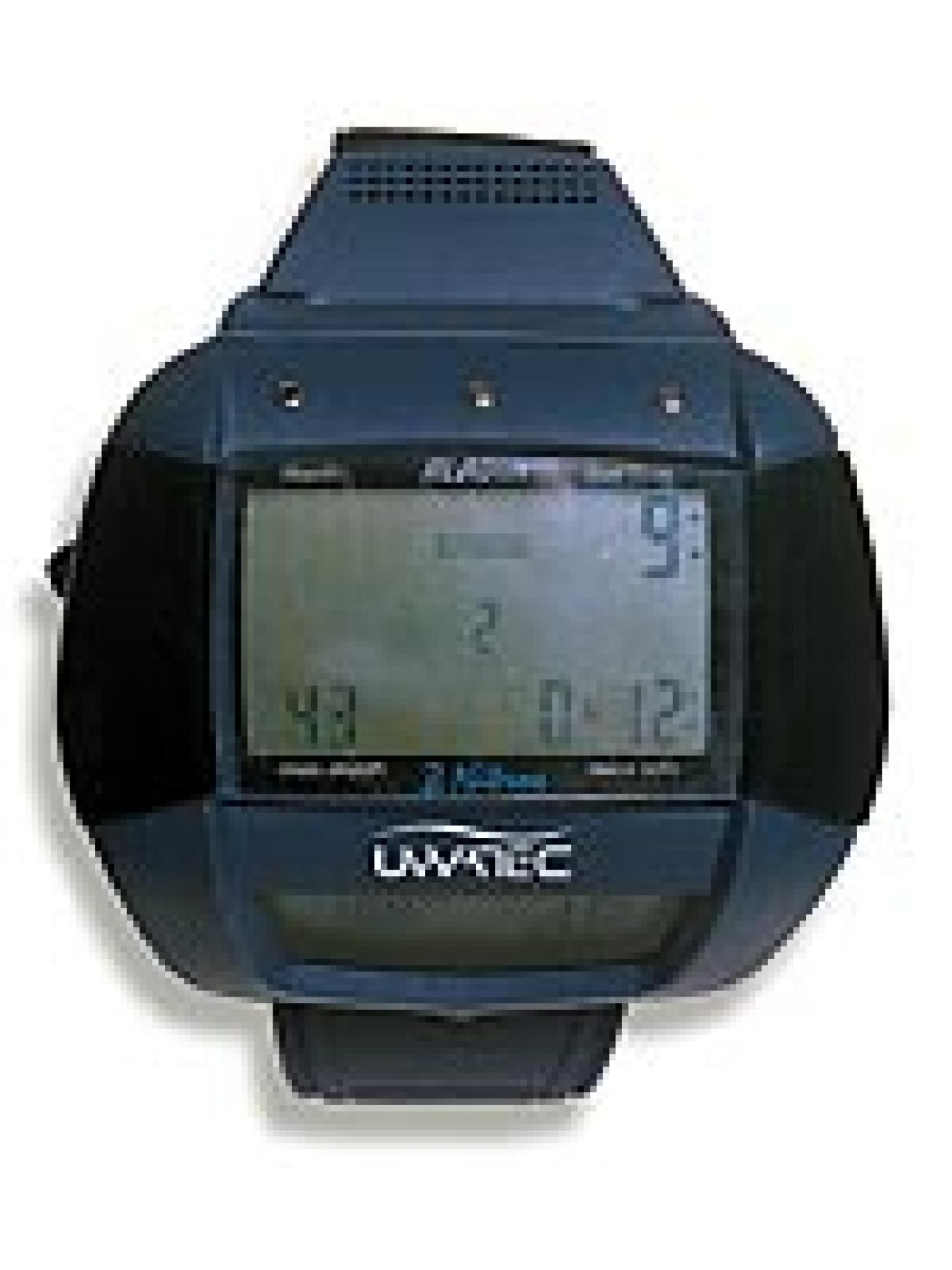
| | SCUBAPRO Aladin Air Z Nitrox|
Mounting Options: Wrist, BC.
User control: Electrical contacts.
Thumbs Up: Concise, easily understandable displays; Easy to read under water; Gas time remaining and NDLs both displayed at the same time; Time to fly is an actual calculation; Variable ascent rate indicators provided; More realistic approach to decompression; Long-life batteries; Excellent dive profiler with PC interface.
Thumbs Down: Complete lockout in violation mode; Some settings and data are accessible only with a PC; Electrical contacts are not labeled; Batteries must be replaced at the factory.
Unique among the gas-integrated models tested, Scubapro's Uwatec computers exclusively use water-activated electrical contacts instead of push-button controls. Keeping it simple, all diving data is presented on one easy-to-read screen--there are no alternate screens while in the dive mode.
Uwatec's variable ascent rate indicator (faster when deeper, slower when shallower) improves diving efficiency as long as you keep in mind that a rapid ascent can cause a decompression stop, and if not heeded will then cause a violation and a lockout. And with Uwatec computers, lockouts are total--no default to gauge mode, nothing at all for 24 hours.
Since the electrical contacts are not labeled, on the surface Uwatec computers require some practice to operate. It's sometimes a challenge to figure out or remember which two contacts put you into which mode. For example, log book and dive planning functions are easy to use--once you determine which contact combinations will get you to the screens you want.
Although there are no user adjustments, Uwatec computers are programmed with a self-adjustment function that increases the conservatism based on temperature, work load, ascent rates and dive profiles. The PC interface provides for 37 logged dives and 175 to 200 minutes of dive profiles, but this can be increased with the use of the optional Memo Mouse to nearly 60 hours of profiles.
Owner's manuals for this computer is an improvement over Uwatec's non-gas-integrated computers, but it can still be frustrating to pull information off the pages. Batteries must be replaced at the factory, but you can easily go more than five years between replacements, depending on how many dives are made each year.
The hoseless Aladin Air Z Nitrox comes standard with illumination and offers an optional screen guard to extend the life of the computer. However, at depth the guard can act as a trap for sand and seaweed, and on the surface, sun reflects off, and water tends to bead on, the plastic, making the computer screen underneath sometimes difficult to see. But if problems persist with the screen guard, you don't have to use it.
The Aladin Air Z Nitrox will work without the first stage transmitter, but of course will not display the gas function. It tested slightly more conservative than the other hoseless computers in this go-round.
The oxygen function of the Aladin Air Z Nitrox does not default. It can be programmed for oxygen from 21 to 99 percent in one percent increments. The computer features excellent oxygen warnings.
Suunto Cobra
|| |---|
|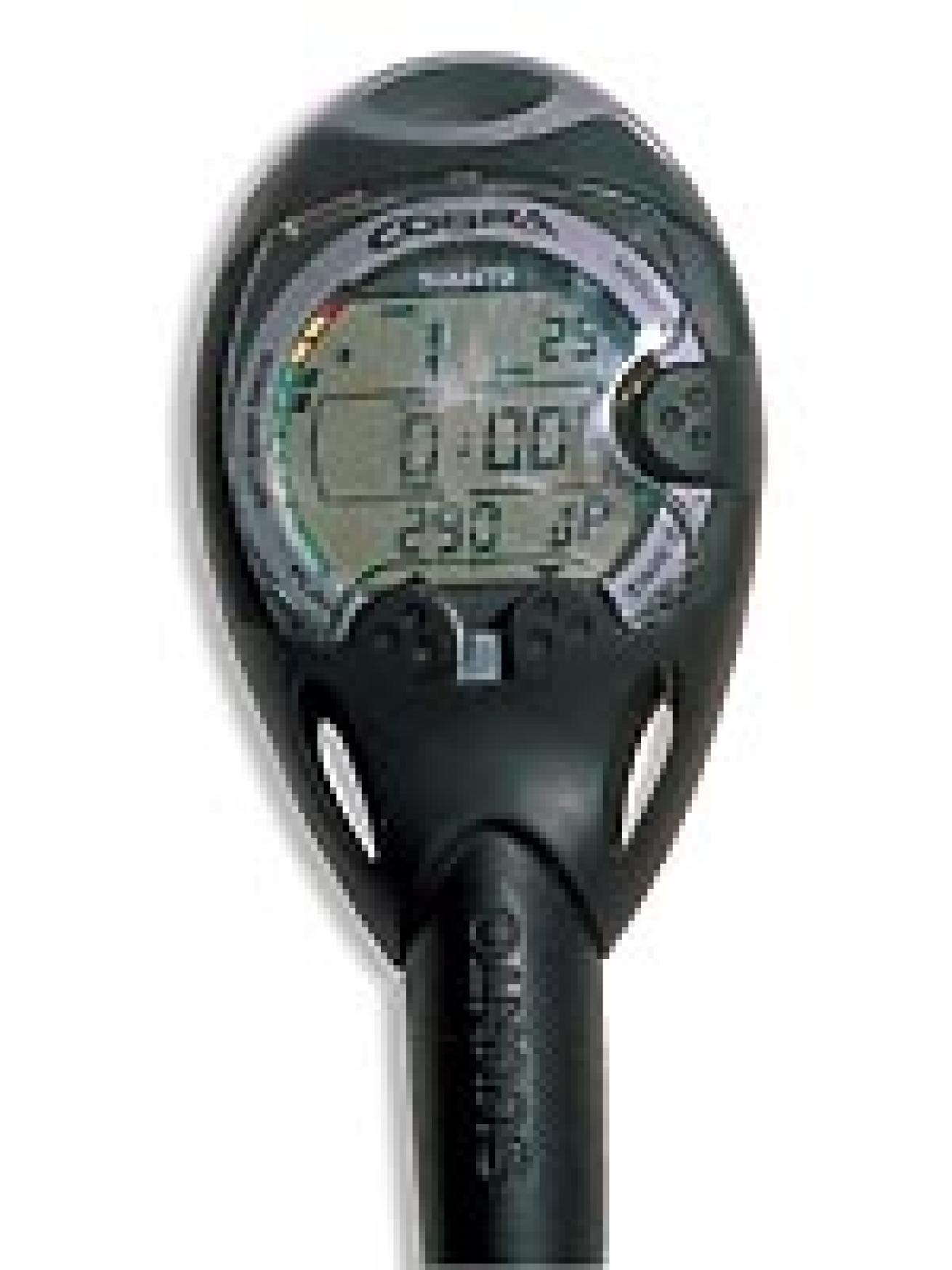
| | Suunto Cobra|
Mounting Options: Cobra.
User control: Three push buttons and electrical contacts (automatic activation).
Thumbs Up: Compact, ergonomic package; Bar graphs with three-color highlighting; Built-in dive simulator to plan future dives; Extended decompression range; Provides for both mandatory and optional safety stops; Maximum depth alarm; Huge dive profile/logbook memory; PC-downloadable; Bookmark feature to mark events during the dive; Backlight for both surface and under water; Optional quick-release connection; Above-average owner's manual and large waterproof prompt card; Nitrox-capable; User-replaceable battery.
Thumbs Down: Multicolored bar graphs difficult to see on the surface and at depth; Push-button controls not labeled; Difficult to push buttons due to console-molded button covers, especially at depth with gloves on; Sometimes difficult to read screen on the surface with shield attached; If violated, goes into gauge-only mode for 48 hours; Nitrogen and oxygen share the same bar graph.
Of all the gas-integrated dive computers tested, the Cobra packs its features and functions into the smallest package. It offers three operating modes: compressed air, nitrox or free diving. The red/yellow/green highlighting is intuitive, but the color bars are a bit thin--difficult to see at depth. The electroluminescent illumination certainly helps.
The nitrogen-loading bar graph indicates the time available at depth, not the total impact of the nitrogen loading like on other dive computers. The decompression mode is continuous, so as you ascend the ceiling moves progressively upward, giving you credit for outgassing and providing an hourglass symbol for the optimum decompression zone. During decompression, the total ascent time is also displayed. The Cobra has an automatic safety stop countdown.
Along with delivering tank pressure and estimated gas time remaining, you have the option to set dive time and depth alarms to help facilitate your dive. And while at depth, you can enter bookmarks into the computer's logbook for future reference. The Cobra offers more logbook memory than any other computer--a full 36 hours. This data can be read directly from the display or via a download to your PC. A handy feature is the built-in dive simulator, which allows you to profile projected dives to make sure they can be accomplished within safety limits. The battery powers the computer for one to two years, depending on the number of dives made.

